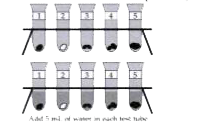In Quincke's tube experiment the difference in amplitudes is due to
refraction
reflection
superposition
polarization
The correct Answer is:C
Step by step video, text & image solution for In Quincke's tube experiment the difference in amplitudes is due to by Physics experts to help you in doubts & scoring excellent marks in Class 12 exams.
Topper's Solved these Questions
Similar Questions
Knowledge Check
- Question 1 - Select One
Quincke's tube is used
Ato demonstrate Doppler effectBto determine the wavelength of a sound waveCto demonstrate the interference of two sound wavesDfor both (a) and (c). - Question 2 - Select One
A Quincke's tube is used
Aas a sound interferometerBas a filterCas both interferometer and a filterDin transverse wave propagation - Question 3 - Select One
In a resonance tube experiment the difference between the first and second resonating lengths is 15 cm.Then the wavelength of the sound wave is
A15 cmB20 cmC25 cmD30 cm
In Quincke's experiment on interference of sound a turning fork of frequency 540Hz is used. Calculate the distance by which the sliding tube is to be drawn out to pass from one minimum to the next minimum.
(Velocity of sound =350ms−1)View SolutionIn Quincke's experiment, the sound intensity has a minimum value I at a particular position. As the sliding tube is pulled out by a distance of 16.5 mm, the intensity increases to a maximum of 9 I. Take the speed of sound in air to be 330 m s^-1. (a) Find the frequency of the sound source. (b) Find the ratio of the amplitudes of the two waves arriving at the detector assuming that it does not change much between the positions of minimum intensity and maximum intensity.
View SolutionIn Quincke's experiment the sound detected is changed from a maximum to a minimum when the sliding tube is moved through a distance of 2.50 cm. Find the frequency of sound if the speed of sound in air is 340ms−1.
View SolutionIn a Quinck's experiment , the sound intensity being detected at an appropriate point , changes from minimum for the second time , when the slide able tube is drawn apart by 9.0cm. If the speed of sound in air be 336m/s, then what is the frequency of this sounding source ?
View SolutionMona tries an experiment with five different metals namely sodium, magnesium, zinc, iron and copperr taken in five different test tubes respectively.

Mona observed that hydrogen gas is evolved in test tube 3, only when it was boiled. test tube 3 contains only ____View Solution

